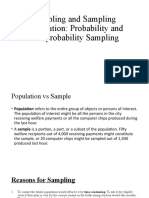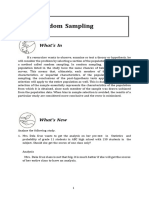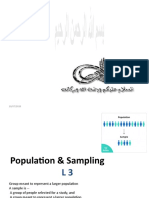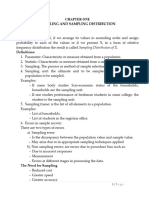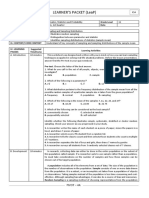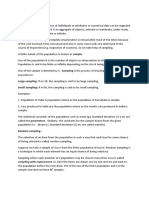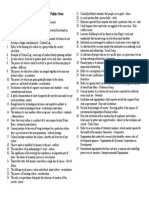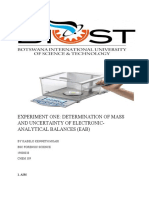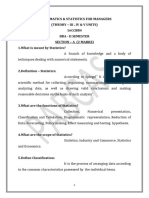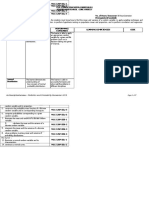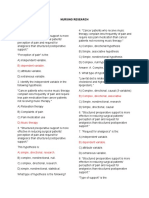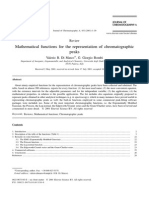The Central Limit Theorem Researchers use sampling if taking a census of the entire population is
∙ States that if a random samples of size n are drawn from a population, then as n impractical. Data from the sample are used to calculate statistics, which are estimates
becomes larger; the sampling distribution of the mean approaches the normal of the corresponding population parameters. For instance, a sample was drawn from
distribution, regardless of the shape of the population distribution. the population, its mean us calculated, and this value is used as a statistic or an
∙ Is a fundamental importance in statistics because it justifies the use of normal estimate for the population mean.
curve methods for a wide range of problems. This theorem applies automatically
to samply from infinite population.
∙ It also assures us that no matter what the shape of the population distribution of 1. Simple Random Sampling
the mean is, the sampling distribution o the sample means is closely normally ∙ Each element of the population has an equal chance of being selected. There are
distributed whenever n is large. no rules that dictate where and how you will start the selection process, as long as
you do not intentionally look for a specific number. In this method, the samples
can be selected through:
Sampling and Sampling Distribution a) Lottery Method - Every member is assigned a unique number. These
Population numbers are put in a jar and thoroughly mixed. After that, the researcher
∙ A group that you want to generalize picks some number without looking at it and those people included in the
∙ Members which you are interested in study.
b) Use of Table of Random Numbers - This table consists of series of digits (0-
Sample is a subset from the population you want to examine, while Sampling is 9) that are arranged in rows and columns and can be read in any direction.
the process used in statistical analysis in which a predetermined number of All the digit are equally probable
observations are taken from a large population.
2. Systematic Random Sampling
Slovin’s Formula: ∙ This can be done by listing all the elements in the population and selecting every
n= N n = sample size kth element in your population list. This is equally precise as the simple random
Ne2 e = margin error (given or commonly 0.05) sampling. It is often used on long population lists. To determine the interval to be
N= population size used in identifying the samples to who will participate in the study, use to
formula:
Sampling Distribution of Sample Means K = N (population)
∙ A frquency distribution using the means computed from all possible random n (sample size)
samples of a specific size taken from a population
3. Stratified Random Sampling
Parameter ∙ This can be done by first diving the elements in the population into strata and
∙ Is a measure that describes a population then samples are randomly selected from each stratum ensuring that each selected
∙ Includes population mean μ, population variance σ2, and population standard element is proportionately represented in the total population.
deviation σ Sampling fraction = n (desired sample size)
Statistic N (population size)
∙ Is a measure that describes a sample
∙ Statistics include sample mean f, sample variance s2, and sample standard 4. Cluster Sampling
deviation s. ∙ A multistage sampling method adopted when it is either impossible or impractical
to compile an exhaustive list of elements found in the target population. The
Thus, descriptive measures computed from all population are called parameters whole population is subdivided into clusters, or groups, and random samples are
while descriptive measures computed from a sample are called statistics. We say that then collected from each group.
the sample mean is an estimate of the population mean μ.













